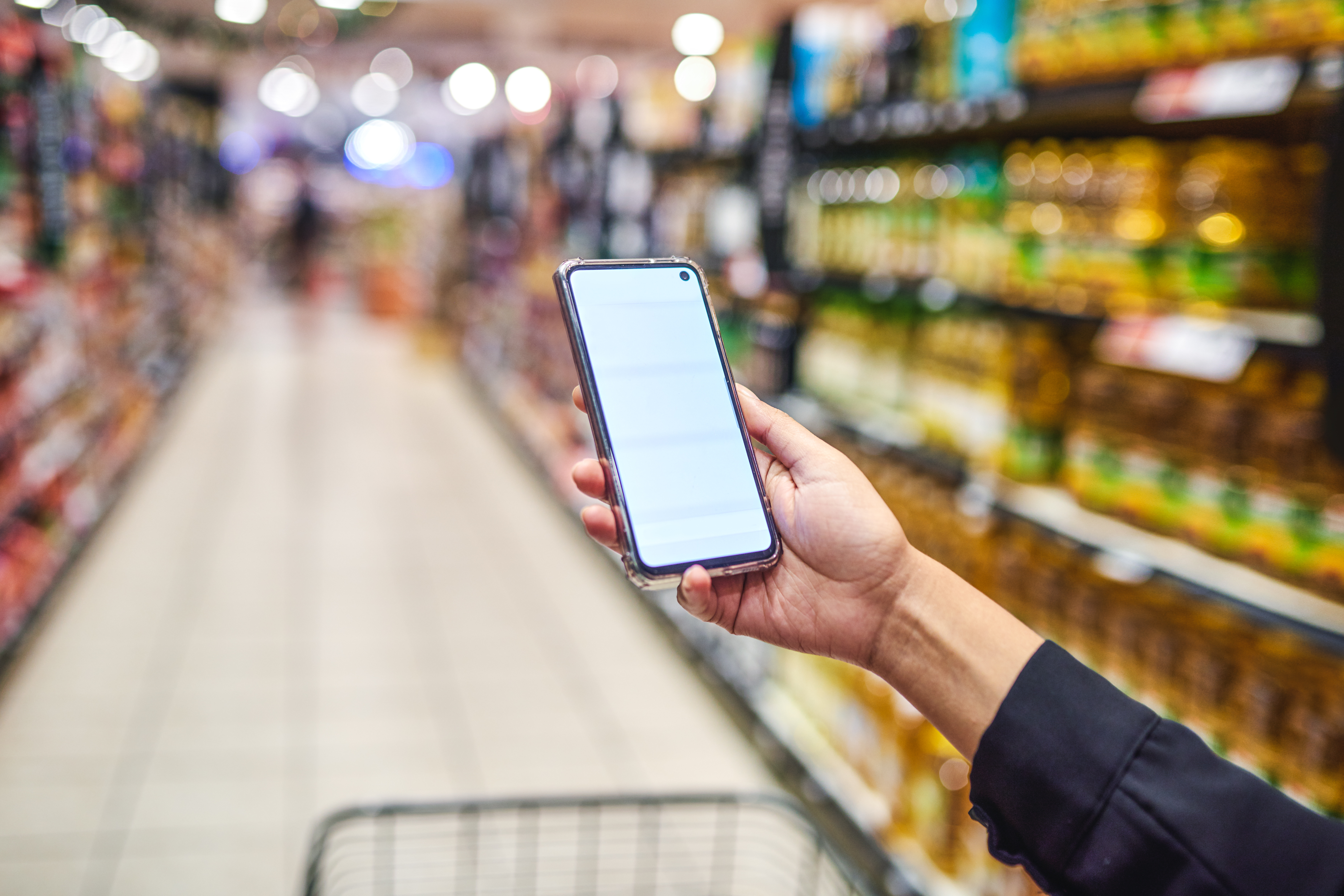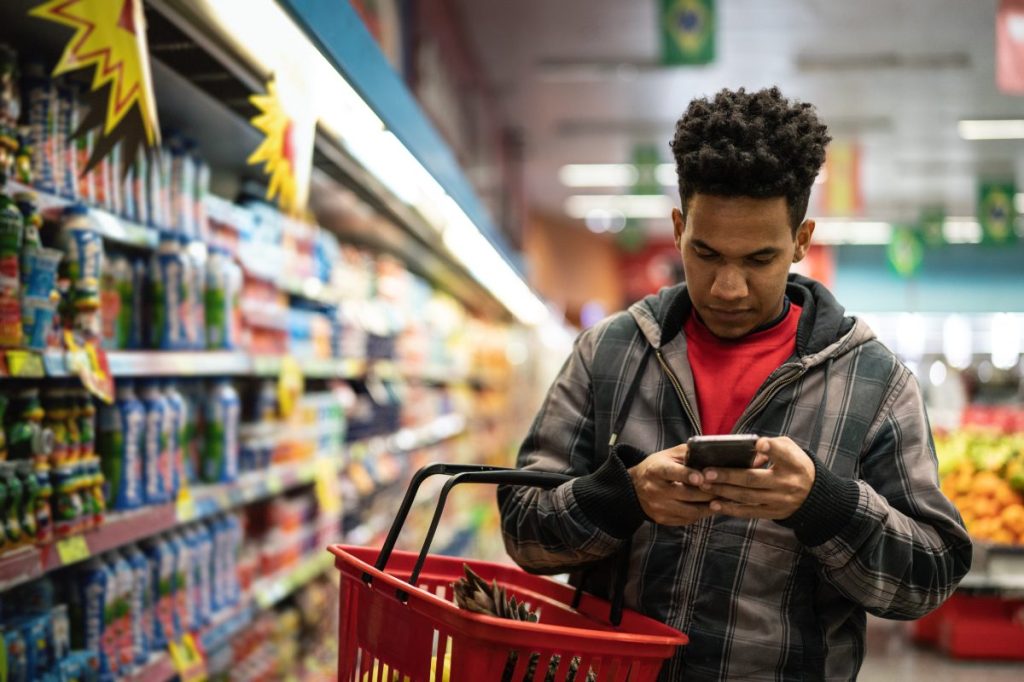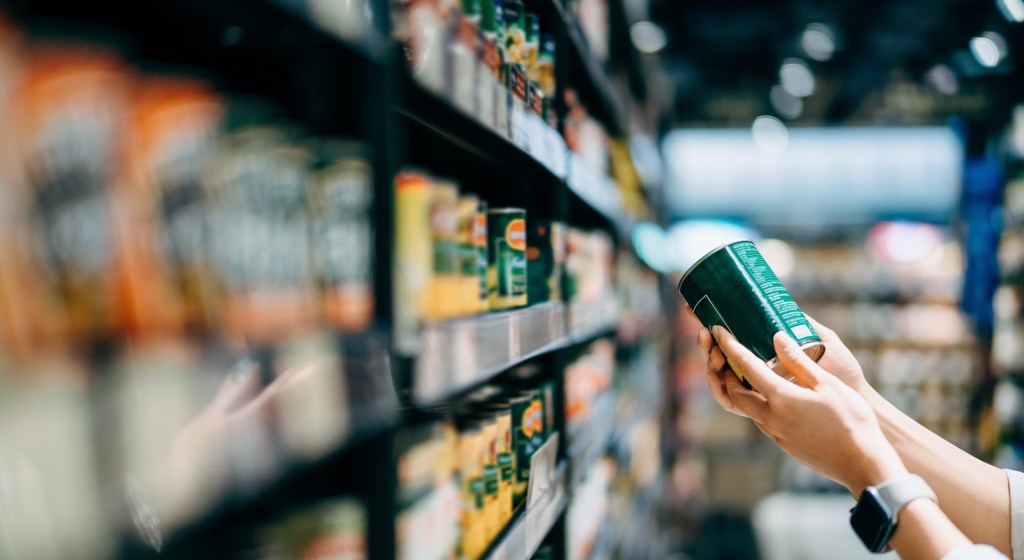
Meeting shoppers where they are
Total CPG online sales are up $21 billion over last year. Only 14% of consumers are still solely shopping for FMCG products in brick-and-mortar stores, so brands need to meet their customers where they shop.
Grocery e-com’s transitional phase
The one-two punch of the pandemic and subsequent inflation has had indisputable impacts on shopper behavior, as well as on how brands and retailers do business today. Consumers try to stock up on necessities as frequently as availability permits—or as often as they can afford to. Broader adoption of shipped and delivery orders for CPG goods, as well as combined online shopping and in-store pick up trips, means retailers and brands need to carefully manage their digital shelves. Skyrocketing or otherwise unstable prices have made consumers less loyal.
Rapid change has been challenging for manufacturers and retailers alike, and some industries are adapting better than others. Categories like beauty and pet care have been leading drivers of online sales while grocery has been making a slower and more unsteady transition to e-commerce.
Category winners will change quickly, however. Grocery is projected to surpass health and beauty as the largest CPG sector online by the end of the year, and many grocery retailers still don’t have the infrastructure in place to be prepared.

Optimize your digital shelf
Learn more about optimizing your digital shelf, digging into omnishopper behavior, and using omnichannel data to scale your business in our recent report, “Shoppers have shifted to omnichannel. What’s next?”
Data uncovers customer behavior
Online shopping has impacted brick-and-mortar shopping in unexpected ways. Customers are not just getting more comfortable with browsing and buying groceries online, they are also increasingly making pickup orders in conjunction with in-store shopping runs. More than one in five (22%) of shoppers now plan an in-store shopping trip combined with a prior online order.
With more tools available to them, like efficient mobile apps and click-and-collect options, consumers are planning out their shopping more than ever before. Whenever it’s convenient for them, a customer can build a digital cart, check product availability at different locations, track rewards and coupons, and choose exact dates and times for either pickup or delivery.
This level of control lets consumers do plenty of product research and comparison before making a purchase, which presents a challenge for retailers. Impulse purchases aren’t as much of a temptation when shoppers can plan their grocery list and visits with such high precision.
The best way for brands and retailers to keep customers engaged—and keep sales growing—is by getting to know them on a deeper level. It’s difficult to stay abreast of constant changes in retail, but it’s necessary in order to stay competitive.




